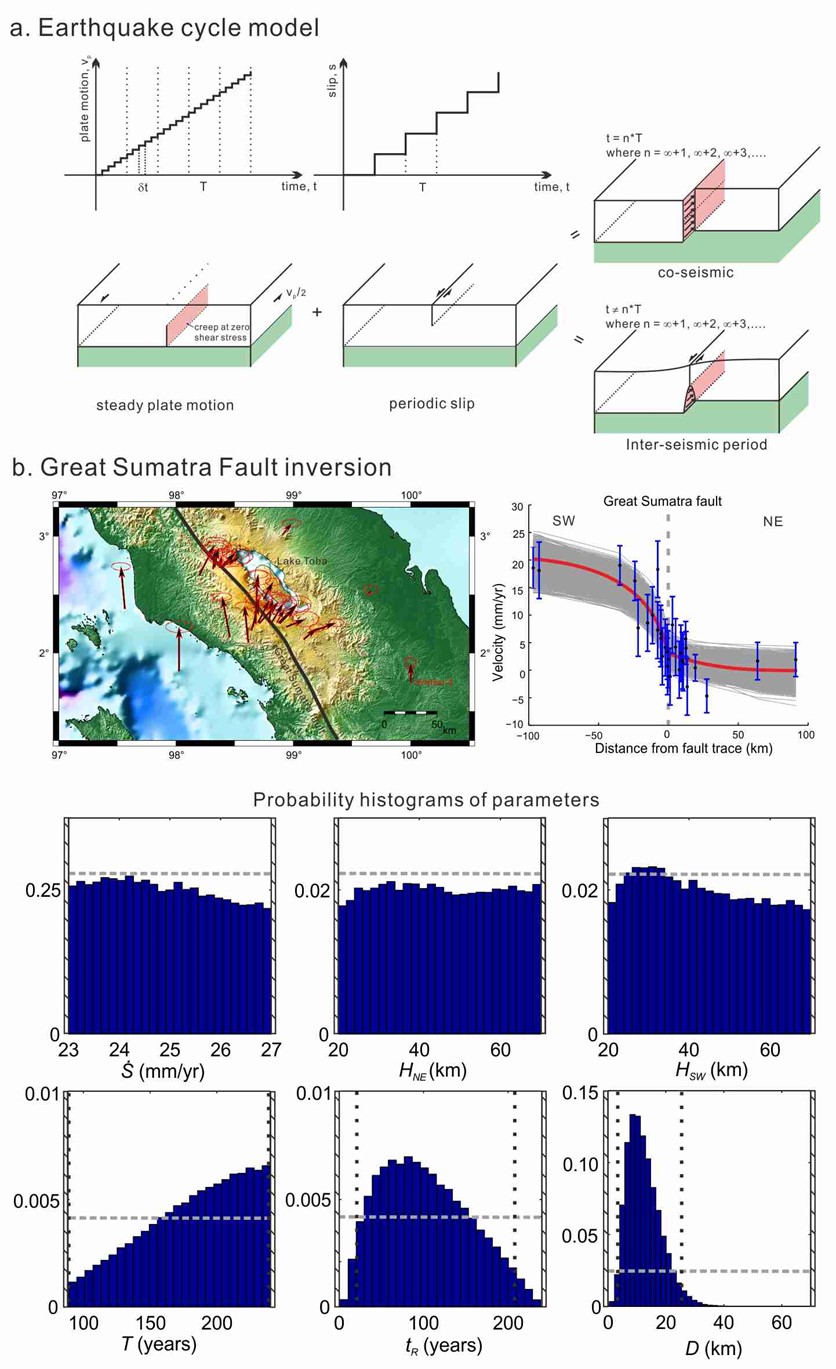Crustal deformation in Taiwan and other regions
|
Collaborators:
Kaj Johnson (Department of Geologic Sciences, Indiana University) Junichi Fukuda (Earthquake Research Institute, University of Tokyo) To integrate the various geophysical and geologic data into dynamic models of crustal deformation, we must move beyond the simpler 2D models and develop 3D models. Our plan is to develop the simplest possible 3D models while still retaining the essential deformation mechanisms necessary to explain the observations. We have completed a study on active tectonics of eastern Taiwan using earthquake cycle models of 3D [Huang et al. 2009, JGR]. We intend to extend the model for the entire Taiwan Island; however, it is not a trivial matter. To guide the development of the 3D models and the integration of multiple data types into the analysis, we propose the parallel development of more sophisticated 2D models to investigate the effect of various simplifying assumptions on the model results. The justification for continued development of 2D models is that it is much easier to incorporate features such as lateral variations in rheology and crustal thickness in 2D. To investigate the influence of lateral variations in rheology and elastic thickness on the surface deformation pattern, we propose to develop 2D boundary element models. We have formulated boundary element models to investigate crustal deformation associated with Carrizo segment of the San Andreas fault in southern California, the Renun segment of Great Sumatra fault, Indonesia, and the Aksay segment of the northern Altyn Tagh fault, China [Huang et al. 2012, JGR]. Figure 1 illustrates the formulation of an antiplane-strain boundary element model, which assumes infinitely long strike-slip faults with all the motion in and out of the plane and shows results from our Great Sumatra Fault inversion. We propose to investigate the influence of variable elastic thickness on the surface velocities and the influence of a possible inelastic core in the root under the Central Range. This 2D model is an extension of our 2D mechanical model with uniform elastic thickness. Figure 1 schematically illustrates a 2D plane-strain boundary element model for Taiwan. We will investigate the effect of a viscously deforming root under Taiwan on the long-term uplift rates in the Central Range and the slip rates on faults. After completing this 2D plane-strain boundary element model for Taiwan, we will extend the earthquake cycle models to 3D. The computational cost is significantly greater when increasing the dimension of the problem and parameterization of the fault geometry becomes more complex in 3D. We believe we can make it after we gain more experience from 2D mechanical models. |

|
| Figure 1. Earthquake cycle model and example of Great Sumatra Fault inversion |


